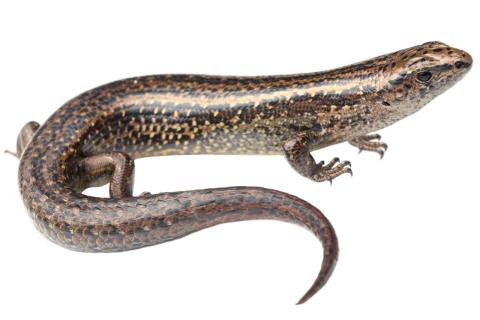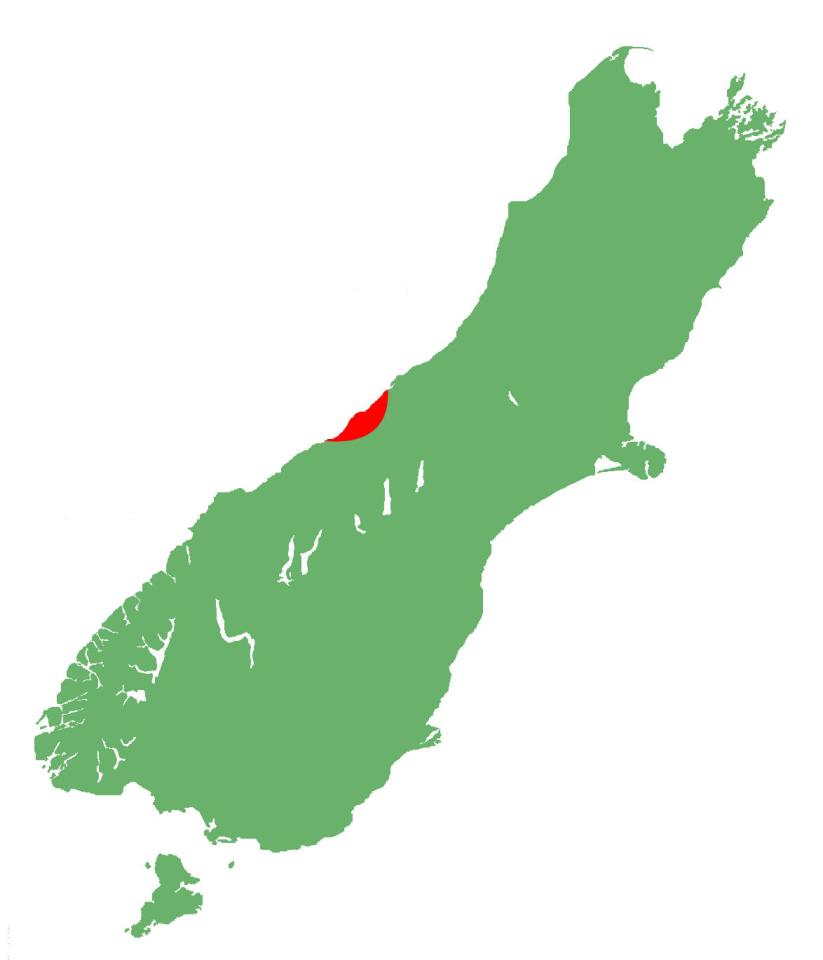- Home
- Herpetofauna Index
- Native
- Oligosoma Aff. Infrapunctatum "Ōkārito"
Oligosoma aff. infrapunctatum "Ōkārito"
Ōkārito skink
Oligosoma aff. infrapunctatum "Ōkārito"

Length: SVL up to 90mm, with the intact tail being equal to or longer than the body length
Weight: unknown
Description
The Ōkārito skink is a gorgeous, secretive reptile that was only recognised as a distinct species in 2021 (it is yet to be formally described). Dorsal surface light to dark brown with numerous speckles and flecks. Ōkārito skinks often bear pale brown, cream, or gold dorsolateral stripes and may bear a dark mid-dorsal stripe. Lateral surfaces bear a dark brown or caramel bands that usually have rough edges and are sometimes outlined with black (and may be bordered by pale cream or gold stripes). Ventral surface yellow or grey and may be speckled or uniform. Ōkārito skinks closely resemble Newman's speckled skinks (Oligosoma newmani), and their specific morphological differences are yet to be identified (Purdie, 2022).
Life expectancy
Unknown.
Distribution
Ōkārito skinks are only currently known to occur in and around Ōkārito on the West Coast of the South Island. However, they may occur elsewhere (Purdie, 2022). They are only known from a small handful of locations.
Ecology and habitat
Ōkārito skinks are diurnal, terrestrial and are extremely cryptic. They usually bask in partial or total concealment under rocks, logs, or in dense vegetation. Ōkārito skinks are known to inhabit forest clearings and edges, scrubland, and pākihi wetland (Purdie, 2022). They are only currently known from lowland ecosystems.
Social structure
Unknown.
Breeding biology
Unknown, but likely has similar habitats to other skinks belonging to the speckled skink complex.
Diet
Likely feeds on small invertebrates (such as insects, spiders, and millipedes) and may opportunistically feed on native fruits, berries, and nectar from flowers.
Disease
Unknown.
Conservation strategy
Ōkārito skinks are currently being monitored by the New Zealand Department of Conservation and surveys for new populations elsewhere are likely to occur.
Interesting notes
Ōkārito skinks were recognised for the first time in 2021, but had been found in the early 2000s and were mostly forgotten about. Interestingly, one of the first Ōkārito skinks found in 2021 was referred to as "Pākihi Pete", because he inhabited a small vegetation island in pākihi wetland and was frequently observed by researchers. Pākihi Pete is featured as the main image in this synopsis.



